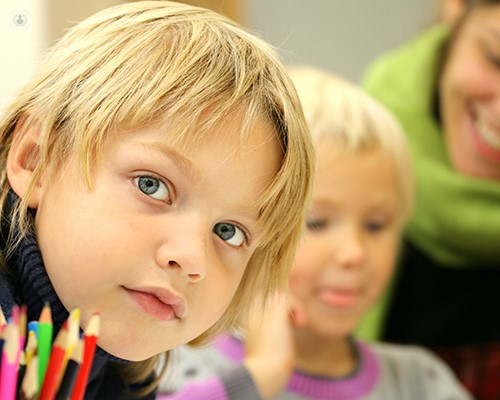Brain tumour care - supporting the transition into adulthood
Written by:Brain tumours in children are very rare; rarer than in adults. To put this into perspective, it is estimated that 1 in 750 people aged between 15 and 25 will have survived cancer, whereas only 1 in 3,000 will have had a brain tumour.
Brain tumours are often curable, with the cure rate being at around 80%, but patients have to live with the negative effects of the treatment, such as radiotherapy and chemotherapy, which affects their quality of life.
Consultant paediatric endocrinologist Dr Helen Spoudeas talks about the SUCCESS charity which she founded and how it aims to provide multidisciplinary care to childhood brain tumour and brain cancer survivors.

What are the different types of brain tumour in children?
Although they are very rare, children can be affected by two kinds of brain tumour
- Tumours that are located in the back part and the upper part of the brain
- Tumours that are located deep in the middle of the brain.
Malignant tumours such as medulloblastoma and ependymoma are frequently located in the back part and the upper part of the brain.
Tumours such as gliomas, craniopharyngiomas, and pituitary adenomas, which are more often located deep in the middle of the brain, close to vital pituitary, endocrine, visual and metabolic pathways. These are often less easily resectable, may recur and can also threaten life and wellbeing.
How are brain tumours in children treated?
The strategy for treating brain tumours generally is surgical removal, followed by radiotherapy. This gives an approximately 70 per cent cure rate; if chemotherapy is added the cure rate increases to around 80 per cent. The downside of this treatment is that the tumour, along with the treatment, can have detrimental effects on the child’s health which can even last into adulthood.
What happens after a brain tumour is cured?
Successful brain tumour treatment doesn’t always mean that the child will be completely well. They would likely still have the neurological and visual problems that resulted from the tumour, probably lose some intellectual ability, especially in those patients below the age of seven, they would lose their hair, they would develop growth hormone deficiency in almost every case, and will often go through early puberty. For more details on early puberty, see my other article "Early puberty: what are the causes and how is it treated?"
If the tumour is deep-seated in the midbrain, more hormone deficiencies occur which are potentially life-threatening. There is little point in curing children of one life-threatening disease, simply to let them suffer another.
If chemotherapy is used, the child will have more side-effects from the treatment. Such effects include a higher chance of deafness, infertility, kidney problems, undernourishment and an increase in their needs at school.
Radiotherapy given during the treatment for the brain tumour can cause problems with the endocrine system, which controls growth, puberty, development, breastfeeding, and fertility. On top of this, the chemotherapy given can affect the glands around the body, again affecting fertility, kidney impairment, and cause heart toxicity.
It is also thought that vision impairment and hearing impairment affect up to 50 per cent of children who have been undergone brain tumour treatment.
The role of a multidisciplinary approach to care
With a cancerous brain tumour, often the only specialist involved in the case is an oncologist to treat the cancer. However, a multidisciplinary approach is needed to support the under-recognised acquired brain injury with support from a neurologist, endocrinologist and psychologist, regardless of the treatment received but especially in those treated most intensively and at the youngest ages. A child’s brain is adaptable, and with the right approach, and can recover well following injury.
Often it is very difficult to know whether the negative effects are caused by:
- the illness
- the tumour
- the surgery
- any tumour recurrence
- the treatment
This care is often not provided to a high enough standard once the tumour has been removed. However, the role of the SUCCESS charity is to provide high-level neurorehabilitative aftercure care for children post-brain tumour treatment.
To make an appointment with Dr Spoudeas and receive specialist help regarding your child's health, click here.


